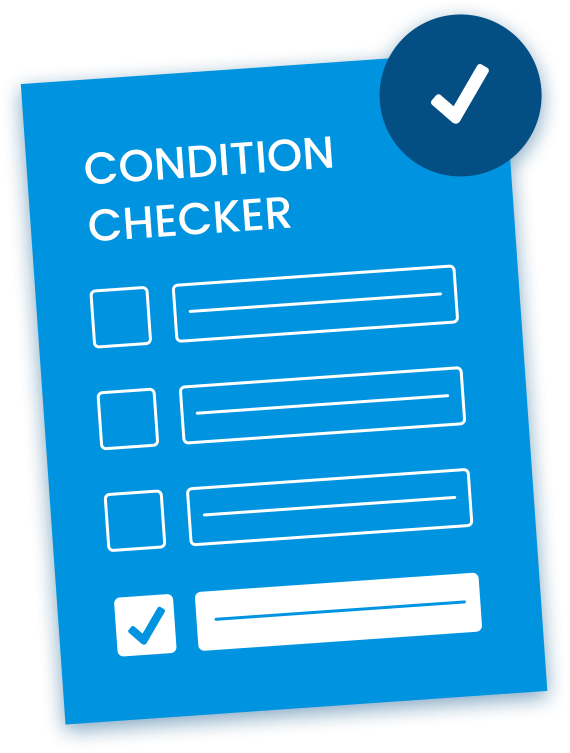Osteoarthritis
Find out which possible conditions you may be suffering from by trying our 2-min Guided Pain Assessment Form!





Osteoarthritis (OA) is the most common form of joint disability in the world. Also known as degenerative joint disease, OA occurs when the cartilage that lines the tips of your bones begins to wear away. This can occur for any number of reasons, but the most common cause is wear and tear.
Keep in mind that your bones are in near constant motion with one another. As we walk, climb the stairs, or adjust our posture, our bones shift, slide, and glide past one another. Cartilage prevents our bones from grinding against one another during this process.
However, like any object that comes into contact with constant abrasion, our cartilage can break down. Imagine sanding a piece of finished wood. Over time, the protective surface of the wood will wear away and the shape of the wood will change under the force of friction. The same thing can happen to your bones. As the protective cartilage wears away, your joints will grind against one another, eroding at the very surface of your bones.
When this occurs initially, the bones can become very inflamed. Your body—assuming the very worst—releases cytokines and enzymes in an attempt to fight off non-existent pathogens (or germs). Unfortunately, this only serves to compound the process, speeding up joint breakdown and worsening your symptoms. Like joint pain and stiffness.
In the United States, 27 million Americans suffer from osteoarthritis every year. In fact, OA is so commonplace that 50% of all adults will develop OA of the knee during their lifetimes. However, certain risk factors, activities, and injuries make OA more likely for some individuals than for others. These factors include:
Does this sound like you? Then, contact NJSO today to receive the latest advancements in OA treatment and therapy!

Find your condition with our 2-minute Condition Checker.
If you have been diagnosed with OA, then you may experience the following symptoms:
More rarely, OA can cause fragments of bone or cartilage to chip off of the joint surface. In addition, stress fractures, joint infections, and torn ligaments or tendons can occur. To avoid the complications of OA, seek prompt treatment from a board-certified orthopedic surgeon. Contact our osteoarthritis specialists at NJSO today!

Discover which treatment options are right for you with our Treatment Finder.
If you suspect that you might have osteoarthritis, then your doctor will use a combination of imaging and lab tests to confirm your suspicions. Your doctor will likely begin by prescribing x-rays. Remember that x-rays cannot reveal the presence (or in this case, the absence) of soft tissues, like cartilage. However, x-rays can confirm the presence of bone spurs—a very common complication of OA. For more complex or severe cases, your doctor may also order an MRI, which will fully reveal the structure of the joint (soft tissues included). But, this isn’t usually necessary.
Additionally, your doctor may order further tests to rule out the existence other disorders. For example, you may need a blood test to rule out the presence of Rheumatoid Arthritis (which presents with similar symptoms). Or, your doctor may order a joint fluid analysis to ensure that you don’t have a joint infection instead of OA.
After diagnosing your osteoarthritis, your doctor may prescribe anti-inflammatory drugs (like Ibuprofen) or other medications that can treat osteoarthritis pain (like Cymbalta). In particular, these drugs can reduce pain and tenderness without adding the risk for addiction into the mix.
To supplement the effects of pain medications, your doctor will likely order a course of physical or occupational therapy. PT will enable you to work on joint and muscle strength while also preserving your joint flexibility. Similarly, OT will allow you to practice maintaining your functional skills. Keep in mind that OA often causes individuals to lose their ability to effectively execute fine motor movements, like writing with a pencil or buttoning a shirt. OTs are masters at regaining these everyday skills and helping you devise useful hacks to maintain your independence.
Lastly, your doctor may suggest alternative therapies, like yoga or swimming. Both of these forms of exercise are “joint gentle.” This means that you can build strength and cardiac endurance without overwhelming your joints.
If you don’t find sufficient pain relief from conservative methods, then you may need surgery to address your OA. Because OA can affect so many different parts of your body, many different surgical procedures are possible. However, some of the most common approaches include:
Looking for OA treatments near you? New Jersey Spine & Ortho has numerous surgical center locations throughout New Jersey, New York, Florida, and soon-to-be Pennsylvania. For award-winning spine care that you can trust, contact our board-certified spine and joint experts today!

Determine your eligibility with our Candidacy Verification.
CONTACT
Phone: 855.586.2615
Current Clients: 855.706.1011
NJ Spine and Orthopedic is dedicated to delivering minimally invasive laser spine surgeries to eliminate the pain, discomfort, and dysfunction of numerous conditions of the neck and back.
OVERVIEW
LOCATIONS
Copyright © 2024 NJ Spine & Orthopedic